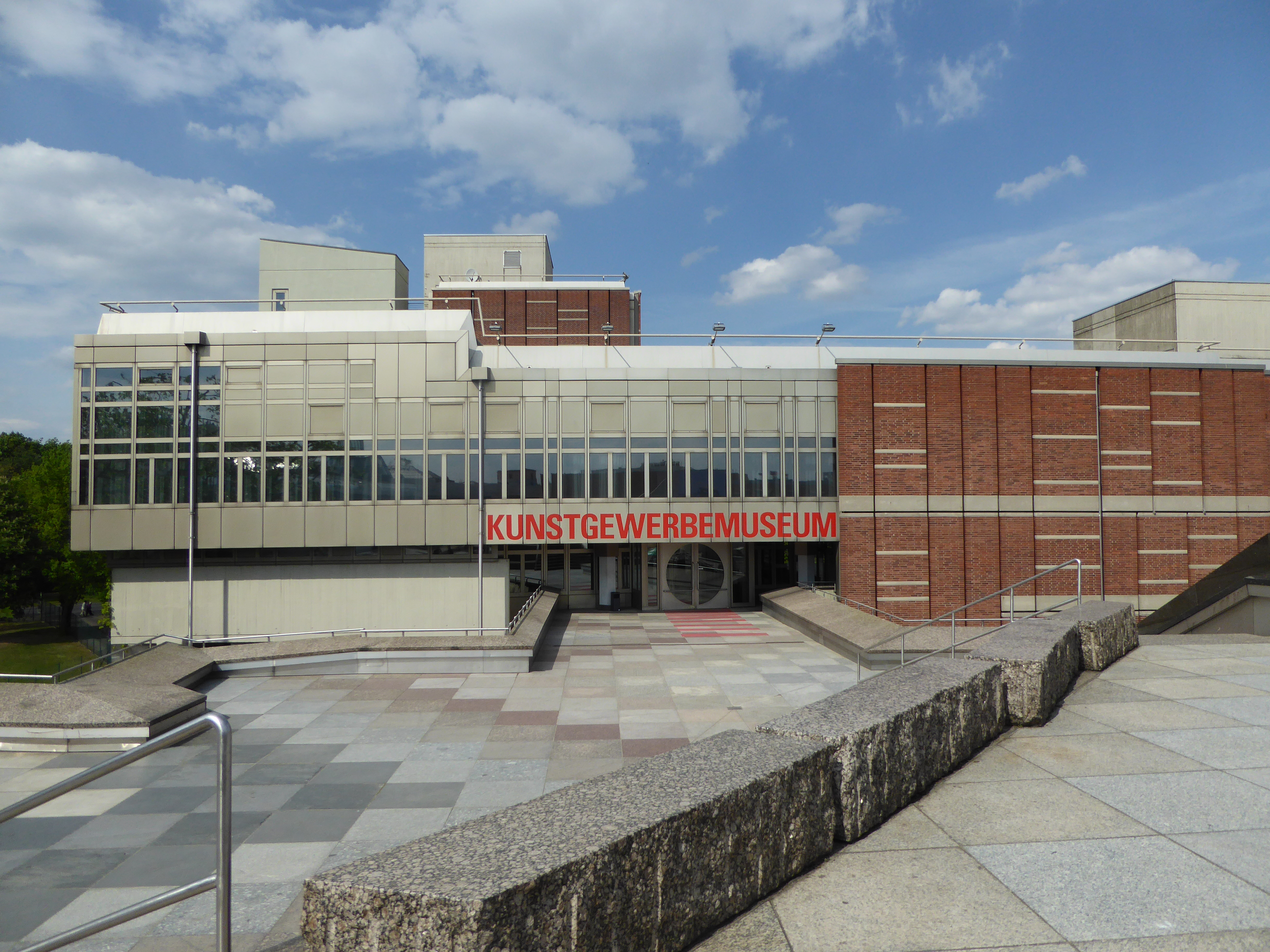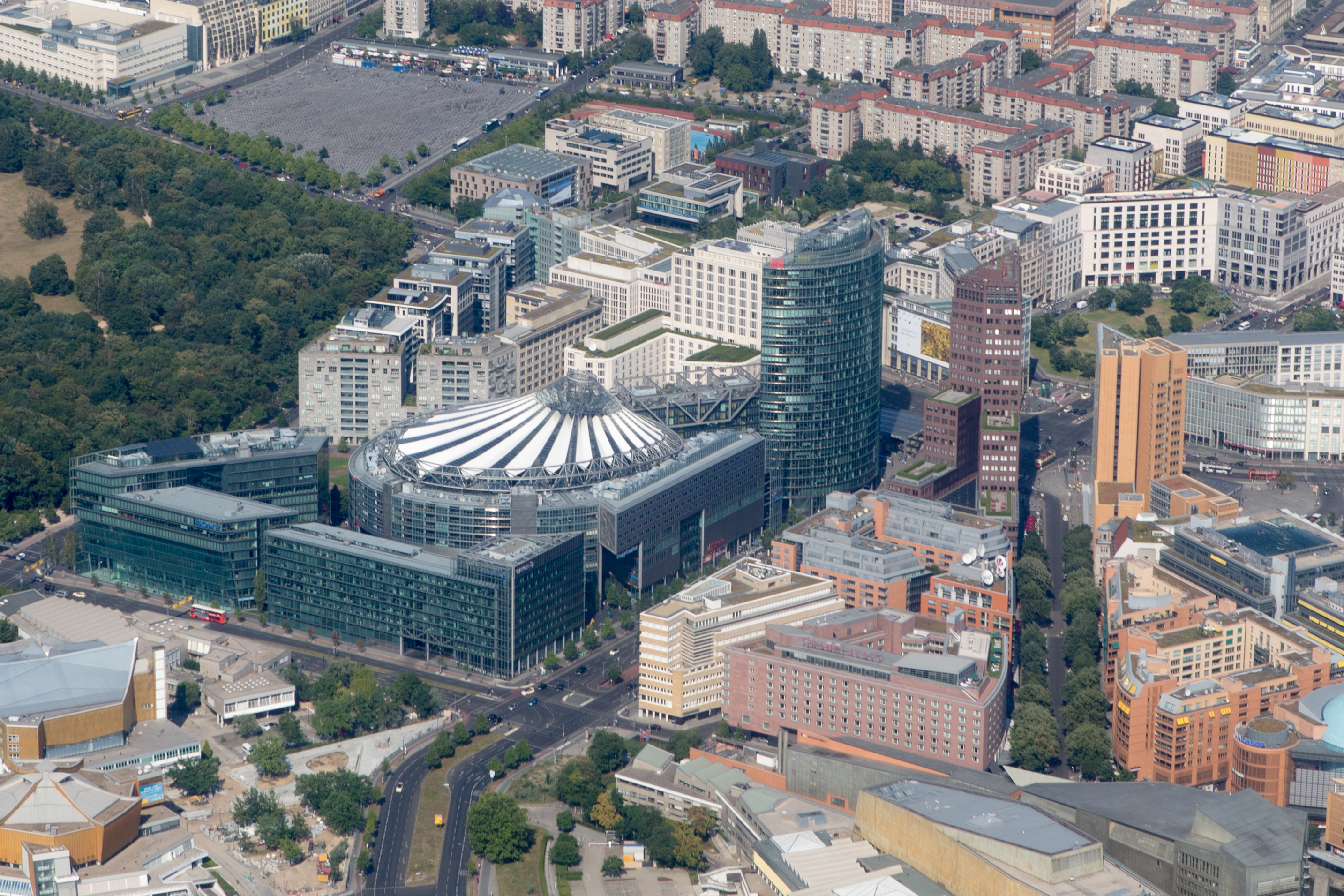|
Martin-Gropius-Bau
Martin-Gropius-Bau, commonly known as Gropius Bau, is an important exhibition building in Berlin, Germany. Originally a museum of applied arts, the building has been a listed historical monument since 1966. It is located at 7 Niederkirchnerstraße in Berlin-Kreuzberg, History and architecture The building was erected between 1877 and 1881 by the architects Martin Gropius, a great uncle of Walter Gropius, and Heino Schmieden in the neo-Renaissance style. The building officially opened in 1881.Berliner Festspiele - Martin-Gropius-Bau . Retrieved 30 January 2018 The ground plan is quadratic (length of each side c. 70 m; building height c. 26 m). The exhibition rooms surround an imposing atrium decorated with mosaics and the |
Kunstgewerbemuseum Berlin
__NOTOC__ The Kunstgewerbemuseum, or Museum of Decorative Arts, is an internationally important museum of the decorative arts in Berlin, Germany, part of the Staatliche Museen zu Berlin (Berlin State Museums). The collection is split between the Kunstgewerbemuseum building at the Kulturforum and Köpenick Palace History It was founded in 1868 as the ''Deutsches Gewerbe-Museum zu Berlin'', and originally had a teaching institute as well as a public museum. The collection grew significantly in the 1870s, and it was renamed ''Kunstgewerbemuseum'' in 1879. In 1881 it relocated into the Martin-Gropius-Bau – where Priam's Treasure was also on display for a time – and in 1921 it moved into the Stadtschloss.Heute mal Extremitäten Tobias Timm, '' |
Barbara Klemm
Barbara Klemm (born 27 December 1939 in Münster) is a German press photographer. She worked for ''Frankfurter Allgemeine Zeitung'' for 45 years. She photographed many of the most important events in recent German history and has received honors, including Fellowship of the Academy of Arts, Berlin and the Pour le Mérite. She was inducted into the Leica Hall of Fame in recognition of her status as "a driving force in reportage photography" and as "an exemplary photographer". Early life She was born in Münster and grew up in Karlsruhe. Her father Fritz Klemm was a painter and a professor at the Academy of Fine Arts, Karlsruhe. Career In 1959 she moved to Frankfurt to work for the ''Frankfurter Allgemeine Zeitung'' (FAZ), for which she worked until 2004. As a press photographer she photographed events including the 1969 student riots in Frankfurt, Heinrich Böll protesting against nuclear weapons in 1983, the 1969 celebrations in Cuba for the tenth anniversary of the revolution, ... [...More Info...] [...Related Items...] OR: [Wikipedia] [Google] [Baidu] |
Gropius Bau Berlin 1
Gropius is a German surname. Notable people with the surname include: * Ati Gropius Johansen (1926–2014), daughter of Walter Gropius and his second wife Ilse * Karl Wilhelm Gropius, also Carl Wilhelm (1793–1870), German painter and stage set maker * Manon Gropius (1916–1935), daughter of Walter Gropius and Alma Mahler-Werfel * Martin Gropius (1824–1880), Historicist architect (uncle of Walter Gropius) * Walter Gropius (1883–1969), Bauhaus architect See also * Gropius House, the house Walter Gropius built for himself and his family in Lincoln, MA, USA * Gropiusstadt, a planned community designed by Walter Gropius in Berlin-Neukölln, Germany * Martin-Gropius-Bau, museum and exhibition hall in Berlin, Germany * Walter-Gropius-Haus (Berlin) The Walter Gropius House (also known as "Gropiushaus") is a residential building with nine floors and 66 apartments at the Händelallee 1-9 in Berlin Hansaviertel, bordering its central Grosser Tiergarten park. It was designed by Walter ... [...More Info...] [...Related Items...] OR: [Wikipedia] [Google] [Baidu] |
Martin Gropius
Martin Carl Philipp Gropius (11 August 1824, Berlin – 13 December 1880) was a German architect.Wirth, Irmgard (1966).Gropius, Martin Carl Philipp. In: ''Neue Deutsche Biographie''. Band 7. Berlin: Duncker & Humblot. . p. 132-133 retrieved 2017-04-16. Life Gropius studied at the Bauakademie in Berlin and after graduation worked as a private architect. He received artistic direction from Karl Friedrich Schinkel and Karl Bötticher and continued his studies with prolonged trips through Greece and Italy. In 1856 Gropius was appointed to a professorship at the Academy of Applied Art and was later a member of the Berlin-Brandenburg Academy of Sciences and Humanities as well as the Austrian Academy of Sciences. Until his death he worked with Heino Schmieden to develop ''Fa. Gropius & Schmieden'', one of the largest architecture firms in Berlin. Martin Gropius was the great-uncle of architect and Bauhaus founder Walter Gropius. The present-day Martin Gropius Bau in Ber ... [...More Info...] [...Related Items...] OR: [Wikipedia] [Google] [Baidu] |
Otto Lessing (sculptor)
Otto Lessing (24 February 1846 – 22 November 1912) was a prominent German Historicist sculptor whose work largely shaped the appearance of Berlin in the late 19th and early 20th centuries. He was the son of history and landscape painter Carl Friedrich Lessing and the great great nephew of poet Gotthold Ephraim Lessing.Jörg Kuhn: ''Otto Lessing 1846–1912'' (Berlin: Freie Universität, 1994Online summary Lessing created sculpture and decorative architectural elements on the façades and interiors of many important buildings in Germany, such as the Reichstag, Berlin Cathedral and the Reichsgericht (Supreme Court) in Leipzig. In addition to large public contracts, he also designed commercial buildings and residential villas. At the height of his career in 1911, Lessing was appointed to the Senate of the Prussian Academy of Arts and awarded the Pour le Mérite in Science and Arts (german: link=no, Pour le mérite für Wissenschaft und Künste), Germany's highest civili ... [...More Info...] [...Related Items...] OR: [Wikipedia] [Google] [Baidu] |
Kreuzberg
Kreuzberg () is a district of Berlin, Germany. It is part of the Friedrichshain-Kreuzberg borough located south of Mitte. During the Cold War era, it was one of the poorest areas of West Berlin, but since German reunification in 1990 it has become more gentrified and known for its arts scene. The borough is known for its large percentage of immigrants and descendants of immigrants, many of whom are of Turkish ancestry. As of 2006, 31.6% of Kreuzberg's inhabitants did not have German citizenship. Kreuzberg is noted for its diverse cultural life and experimental alternative lifestyles, and is an attractive area for many, however, some parts of the district are still characterized by higher levels of unemployment. The counterculture tradition of Kreuzberg led to a plurality of votes for the Green Party, which is unique among all Berlin boroughs. Geography Layout Kreuzberg is bounded by the river Spree in the east. The Landwehrkanal flows through Kreuzberg from east to ... [...More Info...] [...Related Items...] OR: [Wikipedia] [Google] [Baidu] |
Applied Arts
The applied arts are all the arts that apply design and decoration to everyday and essentially practical objects in order to make them aesthetically pleasing."Applied art" in ''The Oxford Dictionary of Art''. Online edition. Oxford University Press, 2004. www.oxfordreference.com. Retrieved 23 November 2013. The term is used in distinction to the fine arts, which are those that produce objects with no practical use, whose only purpose is to be beautiful or stimulate the intellect in some way. In practice, the two often overlap. Applied arts largely overlaps with decorative arts, and the modern making of applied art is usually called design. Example of applied arts are: * Industrial design – mass-produced objects. * Sculpture – also counted as a fine art. * Architecture – also counted as a fine art. * Crafts – also counted as a fine art. * Ceramic art * Automotive design * Fashion design * Calligraphy * Interior design * Graphic design * Cartographic (map) design ... [...More Info...] [...Related Items...] OR: [Wikipedia] [Google] [Baidu] |
Vikings
Vikings ; non, víkingr is the modern name given to seafaring people originally from Scandinavia (present-day Denmark, Norway and Sweden), who from the late 8th to the late 11th centuries raided, pirated, traded and settled throughout parts of Europe.Roesdahl, pp. 9–22. They also voyaged as far as the Mediterranean, North Africa, Volga Bulgaria, the Middle East, and North America. In some of the countries they raided and settled in, this period is popularly known as the Viking Age, and the term "Viking" also commonly includes the inhabitants of the Scandinavian homelands as a collective whole. The Vikings had a profound impact on the early medieval history of Scandinavia, the British Isles, France, Estonia, and Kievan Rus'. Expert sailors and navigators aboard their characteristic longships, Vikings established Norse settlements and governments in the Viking activity in the British Isles, British Isles, the Faroe Islands, Settlement of Iceland, Icela ... [...More Info...] [...Related Items...] OR: [Wikipedia] [Google] [Baidu] |
David Bowie
David Robert Jones (8 January 194710 January 2016), known professionally as David Bowie ( ), was an English singer-songwriter and actor. A leading figure in the music industry, he is regarded as one of the most influential musicians of the 20th century. Bowie was acclaimed by critics and musicians, particularly for his innovative work during the 1970s. His career was marked by reinvention and visual presentation, and his music and stagecraft had a significant impact on popular music. Bowie developed an interest in music from an early age. He studied art, music and design before embarking on a professional career as a musician in 1963. "Space Oddity", released in 1969, was his first top-five entry on the UK Singles Chart. After a period of experimentation, he re-emerged in 1972 during the glam rock era with his flamboyant and androgynous alter ego Ziggy Stardust (character), Ziggy Stardust. The character was spearheaded by the success of Bowie's single "Starman (song), Starma ... [...More Info...] [...Related Items...] OR: [Wikipedia] [Google] [Baidu] |
Germaine Krull
Germaine Luise Krull (20 November 1897 – 31 July 1985) was a photographer, political activist, and hotel owner.Sichel, Kim. ''Germaine Krull: Photographer of Modernity''. Cambridge, Massachusetts: MIT Press, 1999. . Her nationality has been categorized as German, French, and Dutch, but she spent years in Brazil, Republic of the Congo, Thailand, and India. Described as "an especially outspoken example" of a group of early 20th-century female photographers who "could lead lives free from convention", she is best known for photographically illustrated books such as her 1928 portfolio ''Métal''. Rosenblum, Naomi. ''A History of Women Photographers'', 2nd edition. New York: Abbeville Press, 2000. . Biography Krull was born in Posen-Wilda, a district of Posen (then in Germany; now Poznań, Poland), of an affluent German family. In her early years, the family moved around Europe frequently; she did not receive a formal education, but instead received homeschooling from her father, an a ... [...More Info...] [...Related Items...] OR: [Wikipedia] [Google] [Baidu] |
Walker Evans
Walker Evans (November 3, 1903 – April 10, 1975) was an American photographer and photojournalist best known for his work for the Farm Security Administration (FSA) documenting the effects of the Great Depression. Much of Evans' work from the FSA period uses the large-format, 8×10-inch (200×250 mm) view camera. He said that his goal as a photographer was to make pictures that are "literate, authoritative, transcendent". Many of his works are in the permanent collections of museums and have been the subject of retrospectives at such institutions as the or the |
Potsdamer Platz
Potsdamer Platz (, ''Potsdam Square'') is a public square and traffic intersection in the center of Berlin, Germany, lying about south of the Brandenburg Gate and the Reichstag (German Parliament Building), and close to the southeast corner of the Tiergarten park. It is named after the city of Potsdam, some to the south west, and marks the point where the old road from Potsdam passed through the city wall of Berlin at the Potsdam Gate. After developing within the space of little over a century from an intersection of rural thoroughfares into the most bustling traffic intersection in Europe,Weitz, Eric D. ''Weimar Germany'', 2007, Princeton University Press, , page 43 it was totally destroyed during World War II and then left desolate during the Cold War era when the Berlin Wall bisected its former location. Since German reunification, Potsdamer Platz has been the site of major redevelopment projects. Historical background The history of Potsdamer Platz can be traced to ... [...More Info...] [...Related Items...] OR: [Wikipedia] [Google] [Baidu] |




.png)

